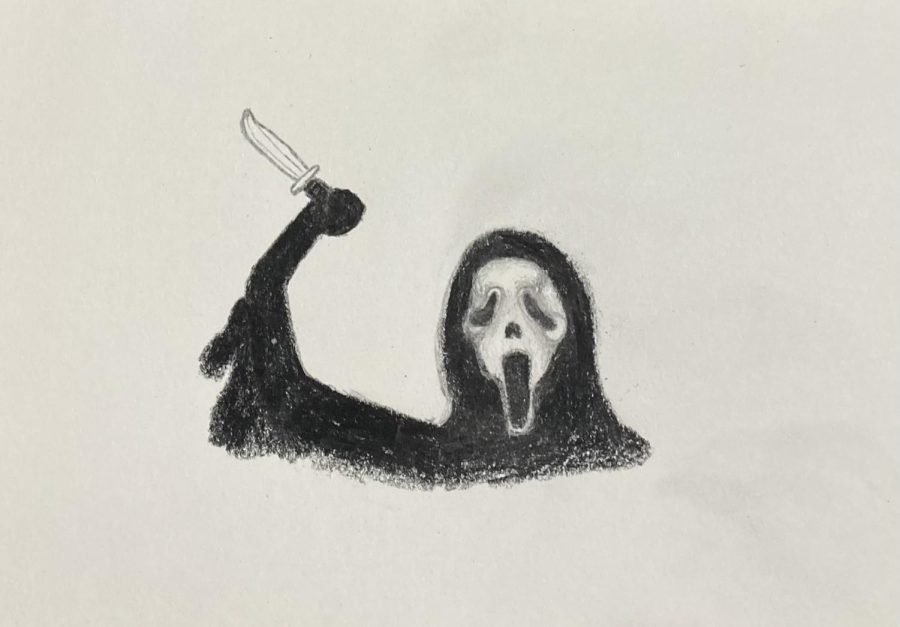A cinematic slashterpiece
Though a late addition to the Scream franchise, Scream 5 lives up to the name, drawing in audiences across the nation.
Viewers everywhere can recognize the scream’s iconic mask, cloak, and, of course, knife, combination.
Recently slashing its way to theaters, Scream 5 uncloaks criticism of para-social relationships and the franchise’s unique self-aware style with fatally sharp wit and scarily clever parallels to the original while cutting a new path for the series in a self-proclaimed “requel” dedicated to late director Wes Craven.
Beginning with a modern reimagining of Drew Barrymore’s iconic performance at the start of the original movie, the film addresses vilifications aimed at its predecessors with morbid humor, quickly setting the tone for audiences and reminding viewers of just how terrifying of a serial killer Ghostface(s) can be. The scene involves Tara Carpenter (played by Jenna Ortega) getting an eerily familiar phone call from a distorted voice before playing the most horrifying version of hide-and-seek tag imaginable, ending with the protagonist in the hospital begging for her estranged sister Sam (played by Melissa Barrera) to return to the now re-haunted town of Woodsboro.
Scream 5 has a plethora of lovable traits, but the most prominent is its balance in nearly every aspect of the film; it incorporates the self-reflective humor that has sustained the series’ popularity in moderation, careful to allow for brutally juxtaposed moments that ground the flick in horror. This concept of balance is also applied to the cinematography of the movie. Wide shots with dynamic lighting and liberal placement of black and white objects in both the back and foreground have viewers searching for the specter of Woodsboro, driving up tension and leaving audiences in the dark until it’s too late. Hammering the point home, the slasher includes a perfect amount of fanfare in the movie by including legacy characters without allowing them to mask the performances of new (Ghost)faces. This acting isn’t wasted either. Portrayals of characters new and old reinforce or establish these Woodsboro denizens as fan favorites, supplying movie-watchers with plenty of strong characters to root for as well as deranged ones to avoid like a knife in the throat. Finally, the picture’s bold choices made for a memorable experience that had few downsides.
The film’s most grievous, yet still relatively inconsequential flaw, was its final act. Like in other Scream movies, the master plan is revealed at the end via monologue. This trope is pretty tired after years of heavy use, but a unique take and different scene structure helped subvert the fault quite a bit. This approach used throughout the flick helped it avoid common pitfalls in typical, meta Scream fashion, but got old as the credits approached. Otherwise, the only noticeable shortcomings were the fight/kill scenes. Typically structured the same way, these bits were easily manipulated toward plot progression. Still, this shortfall is minuscule as it plays to the weaknesses of the killer behind the mask.
Overall, Scream 5 is a cutthroat, thoroughly enjoyable, and well-thought-out movie despite its drop-off towards the end. So, the next time a masked murderer (dis)appears to silence teenagers, look behind, don’t say anything about being right back, and definitely don’t pick up the phone.

This is Tristin and he doesn't have the brain capacity to write a clever bio right now. Ah

Hi! My name is Gecko- I meaaannn Ava :) I sometimes draw stuff for the lantern but most of the time I’m watching anime, reading books at lightning speed,...

